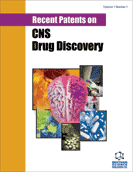Abstract
Brain ischemia induces the IGF-1 system in damaged regions, and exogenous administration of IGF-1 after injury is neuroprotective and improves long-term neurological function. The short treatment window can be extended by mild hypothermia, probably due to delayed apoptosis. Nevertheless, the poor central uptake of IGF-1 and its mitogenic potential preclude clinical application. The N-terminal tripeptide of IGF-1 (glycine-proline-glutamate, GPE) is neuroprotective after central administration. Central uptake of GPE is injury dependent, and it is rapidly degraded in the plasma. Intravenous infusion of GPE prevents brain injury and improves long-term functional recovery, with a broad effective dose range and a 3-7 hour therapeutic window. GPE does not interact with IGF receptors. G-2meth-PE, a GPE analogue with improved stability, has a prolonged plasma half life and is neuroprotective after ischemic injury. Neuroprotection by GPE and its analogue may involve modulating inflammation, promoting astrocytosis and inhibiting apoptosis, and the analogue may have a vascular effect. Cyclo-glycyl-proline (cGP) is an endogenous diketopiperazine possibly derived from GPE. Cyclic GP and its analogue cyclo-L-glycyl-L-2-allylproline (cG-2allylP) are neuroprotective after ischemic injury. cG-2allylP crosses the BBB independent of injury and remains detectable several hours after a single administration. Repeated peripheral administration of cG-2allyP improves somatosensory-motor function and long-term histological outcome.
Keywords: IGF-1, GPE, diketopiperazine, pharmaceuticals, pharmacology, clinical applications and ischemic brain injury
 8
8





















